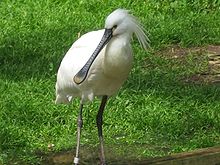Gornje Podunavlje
Parts of the nature reserve are subject to the Croatia–Serbia border dispute; Croatia claims some areas under Serbian control on the eastern side of the river.
In the past 200 years, the amelioration of the area, especially the draining of the marshes, reduced once vastly spread wetland ecosystems in the Pannonian Basin to several patches along the major rivers.
Obsolete ideas of turning the natural streams into canals without gravel or sand in their beds was done allegedly for better sailing and floods prevention.
However, in time dozens of plant and animal species disappeared and even the human population was affected by this process: fish catch diminished and underground waters, used for drinking, were not being purified through the soil anymore.
It is an area of important aquatic and semi-aquatic vegetation, wet meadows and native lowland forests composed of willow, poplar, ash and oak trees.
In 2017 works on revitalization of the marsh Široki Rit began, on an area of 53 ha (130 acres) while the Štrbac locality is scheduled to be next.
In 2009, the preliminary bilateral agreement between Croatia and Hungary was reached on creating a joint natural reserve in the Drava-Danube region.
Natural poplar, oak and willow forests and occasionally flooded wet meadows or numerous oxbow lakes and swamps, which were once widespread in the Danube wetlands, are today rare and fragmented habitats.
The area is home to some important species such as white-tailed eagle (Haliaeetus albicilla) or black stork (Ciconia nigra), but also to ferruginous duck and Eurasian spoonbill.
